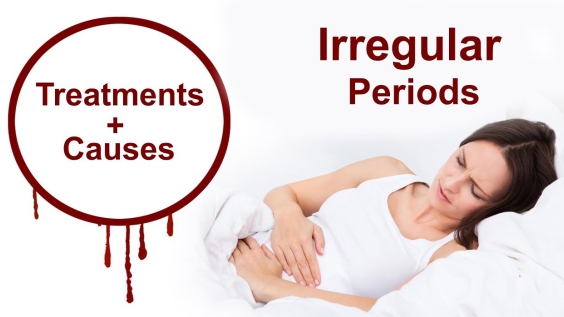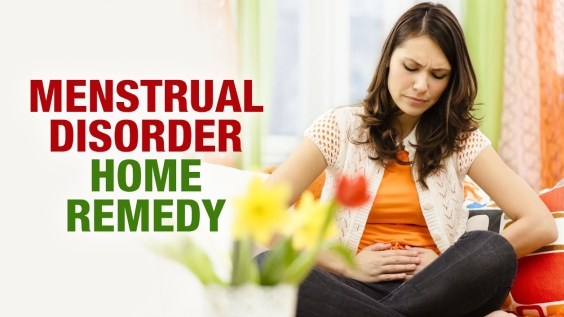Menstrual disorders are a disruptive physical and/or emotional symptoms just before and during menstruation, including heavy bleeding, missed periods and unmanageable mood swings.
Menstruation occurs during the years between puberty and menopause. Menstruation, also called a “period,” is the monthly flow of blood from the uterus through the cervix and out through the vagina.
- The uterus is a pear-shaped organ located between the bladder and lower intestine.
- The cervix is the lower portion of the uterus. It has a narrow opening called the os, which connects to the vagina and allows menstrual blood to flow out of the uterus into the vagina.
- The fallopian tubes connect the uterus and ovaries. Ovaries are egg-producing organs that hold 200,000 – 400,000 follicles (from folliculus, meaning “sack” in Latin). These cellular sacks contain the materials needed to produce ripened eggs, or ova. An egg develops within the follicle.
- The endometrium is the inner lining of the uterus. During pregnancy it thickens and becomes enriched with blood vessels to house and nourish the growing fetus.
- If pregnancy does not occur, the endometrium is shed and a woman starts menstruating. Menstrual flow also consists of blood and mucus from the cervix and vagina.
If one or more of the symptoms you experience before or during your period causes a problem, you may have a menstrual cycle “disorder.”
These include:
- abnormal uterine bleeding (AUB): which may include heavy menstrual bleeding (menorrhagia), no menstrual bleeding (amenorrhea) or bleeding in between periods (metrorrhagia)
- dysmenorrhea: (painful menstrual periods)
- premenstrual syndrome (PMS)
- premenstrual dysphonic disorder (PMDD).
- Hormonal Imbalances. Imbalances in estrogen and progesterone levels can cause heavy bleeding. Hormonal imbalances are common around the time of menarche and menopause.
- Ovulation Problems. If ovulation does not occur (anovulation), the body stops producing progesterone, which can cause heavy bleeding.
- Uterine Fibroids. Uterine fibroids are a very common cause of heavy and prolonged bleeding.
- Uterine Polyps. Uterine polyps (small benign growths) and other structural problems or other abnormalities in the uterus may cause bleeding.
- Endometriosis and Adenomyosis. Endometriosis, a condition in which the cells that line the uterus grow outside of the uterus in other areas, such as the ovaries, can cause heavy bleeding. Adenomyosis, a related condition where endometrial tissue develops within the muscle layers of the uterus, can also cause heavy bleeding and menstrual pain.
- Medications and Contraceptives. Certain drugs, including anticoagulants and anti-inflammatory medications, can cause heavy bleeding. Problems linked to some birth control methods, such as birth control pills or intrauterine devices (IUDs) can cause bleeding.
- Bleeding Disorders. Bleeding disorders that stop blood from clotting can cause heavy menstrual bleeding. Most of these disorders have a genetic basis. Von Willebrand disease is the most common of these bleeding disorders.
- Cancer. Rarely, uterine, ovarian, and cervical cancer can cause excessive bleeding.
- Infection. Infection of the uterus or cervix can cause bleeding.
- Pregnancy or Miscarriage.
- Other Medical Conditions. Systemic lupus erythematosus, diabetes, pelvic inflammatory disorder, cirrhosis, and thyroid disorders can cause heavy bleeding.
Age plays a key role in menstrual disorders. Girls who start menstruating at age 11 or younger are at higher risk for severe pain, longer periods, and longer menstrual cycles. Adolescents may develop amenorrhea before their ovulation cycles become regular.
Women who are approaching menopause (perimenopause) may also skip periods. Occasional episodes of heavy bleeding are also common as women approach menopause.
Other risk factors include:
- Weight. Being either excessively overweight or underweight can increase the risk for dysmenorrhea and amenorrhea.
- Menstrual Cycles and Flow. Longer and heavier menstrual cycles are definitely associated with painful cramps.
- Pregnancy History. Women who have had a higher number of pregnancies are at increased risk for menorrhagia. Women who have never given birth have a higher risk of dysmenorrhea, while women who first gave birth at a young age are at lower risk.
- Smoking. Smoking can increase the risk for heavier periods.
- Stress. Physical and emotional stress may block the release of luteinizing hormone, causing temporary amenorrhea.
Anemia
Menorrhagia is the most common cause of anemia (reduction in red blood cells) in premenopausal women. A blood loss of more than 80mL (around three tablespoons) per menstrual cycle can eventually lead to anemia. Most cases of anemia are mild. Nevertheless, even mild anemia can reduce oxygen transport in the blood, causing fatigue and a diminished physical capacity. Moderate-to-severe anemia can cause shortness of breath, rapid heart rate, lightheadedness, headaches, ringing in the ears (tinnitus), irritability, pale skin, restless legs syndrome, and mental confusion. Heart problems can occur in prolonged and severe anemia that is not treated.
Osteoporosis
Amenorrhea caused by reduced estrogen levels is linked to osteopenia (loss of bone density) and osteoporosis (more severe bone loss that increases fracture risk). Conditions that are associated with low estrogen levels include eating disorders, pituitary tumors, and premature ovarian failure. Because bone growth is at its peak in adolescence and young adulthood, losing bone density at that time is very dangerous, and early diagnosis and treatment is essential for long-term health.





Leave a Reply
You must be logged in to post a comment.